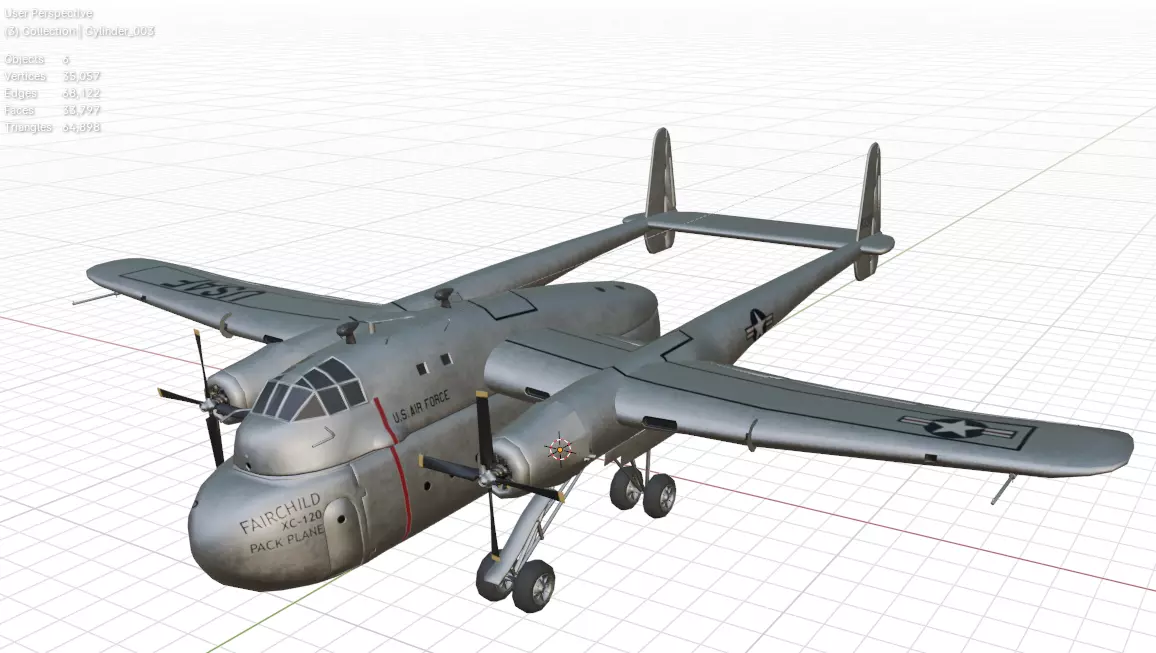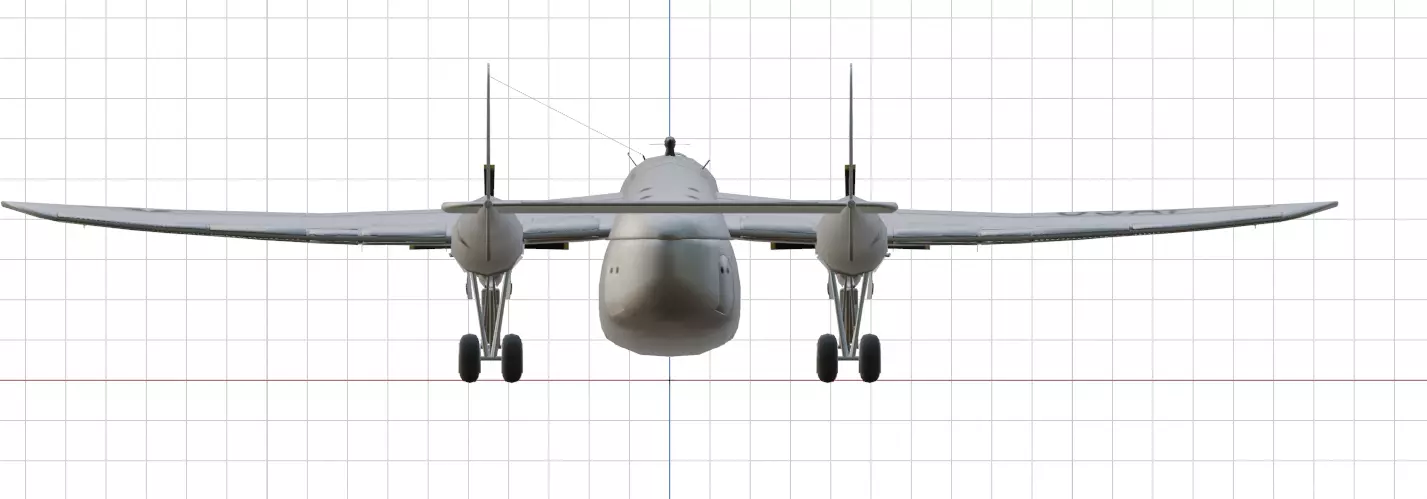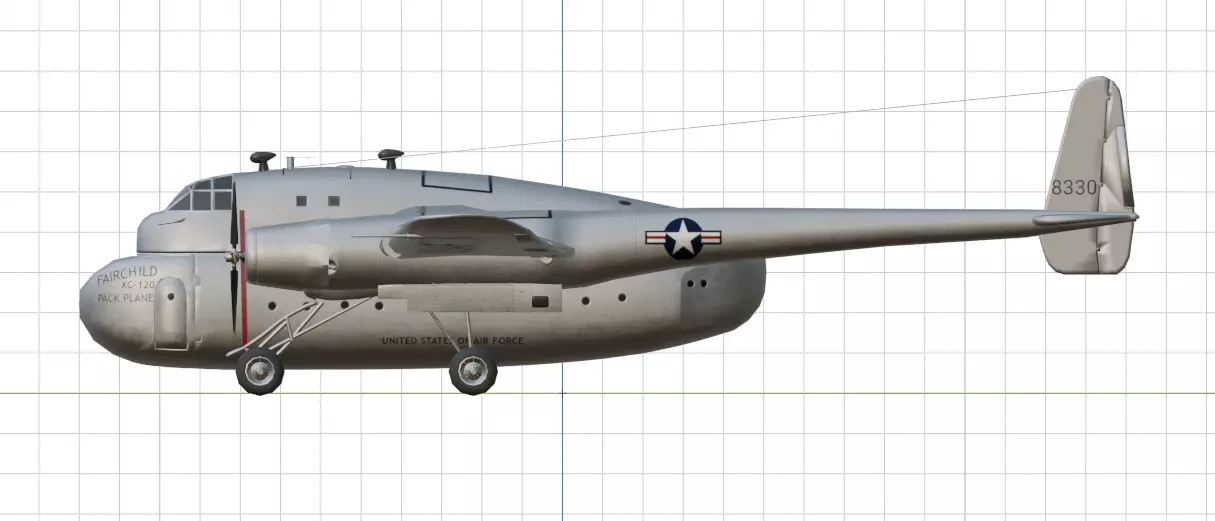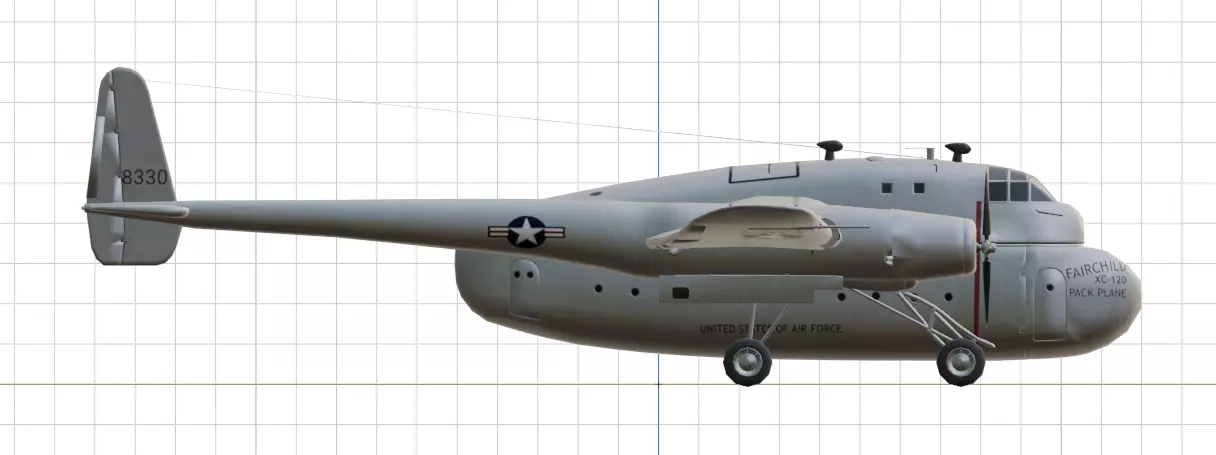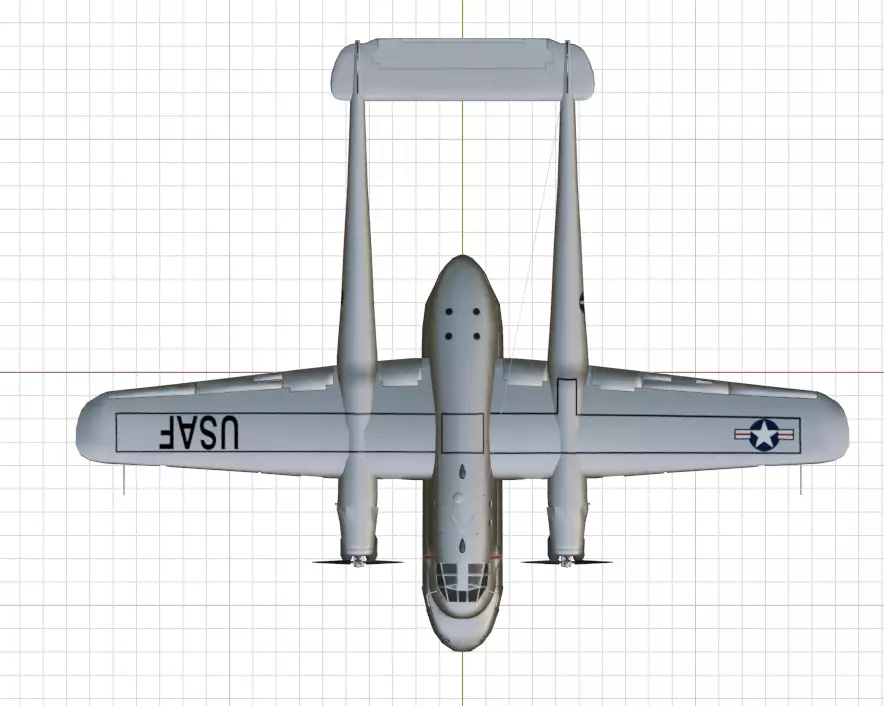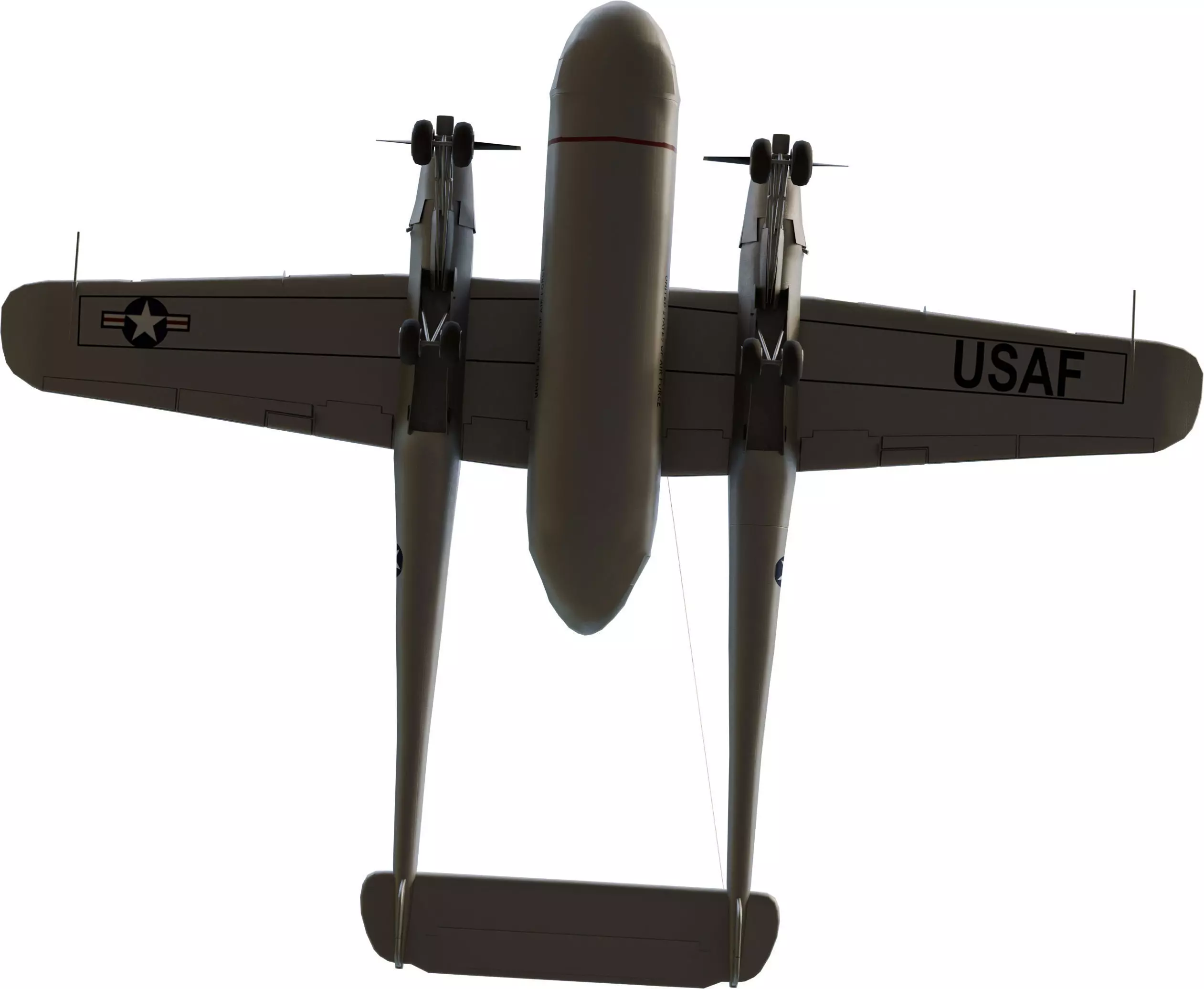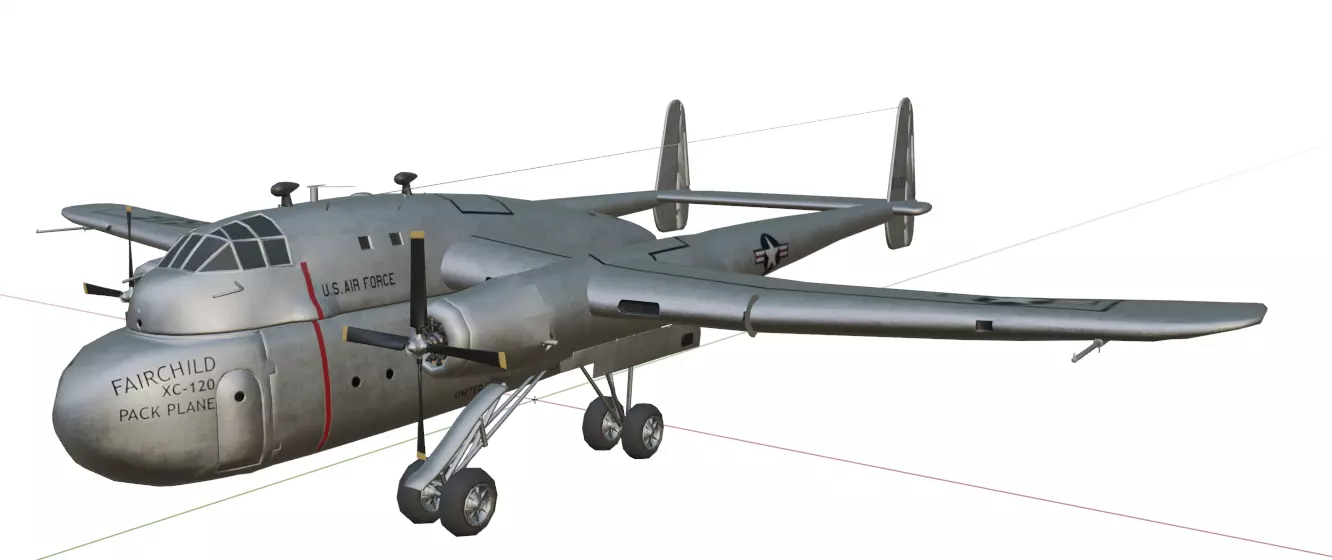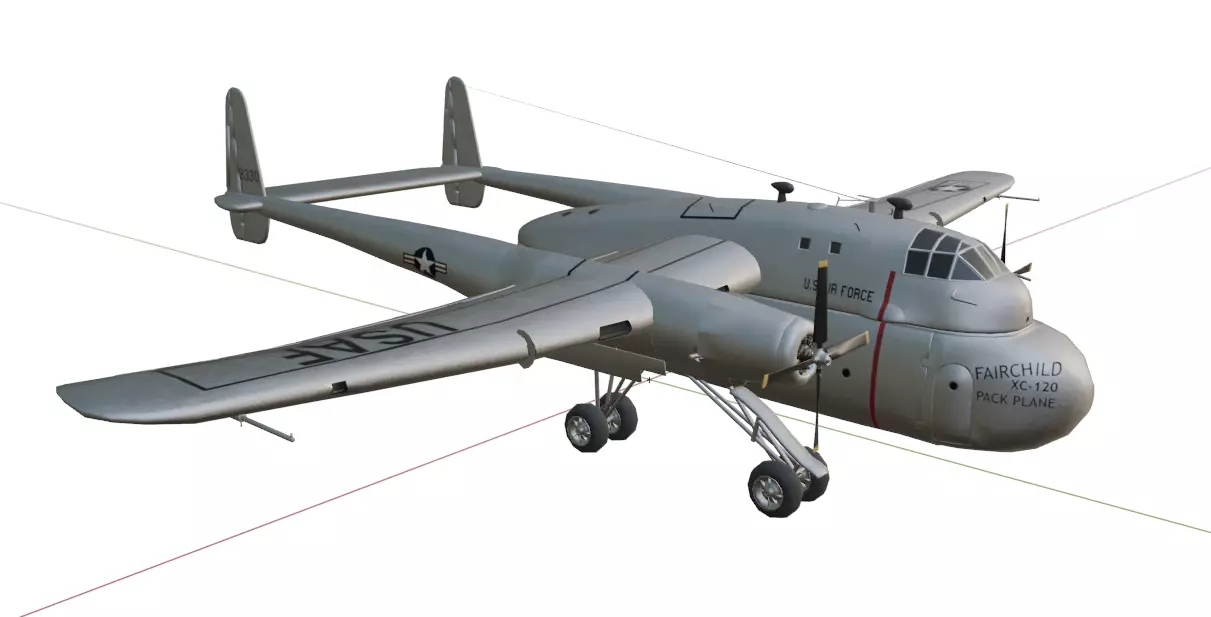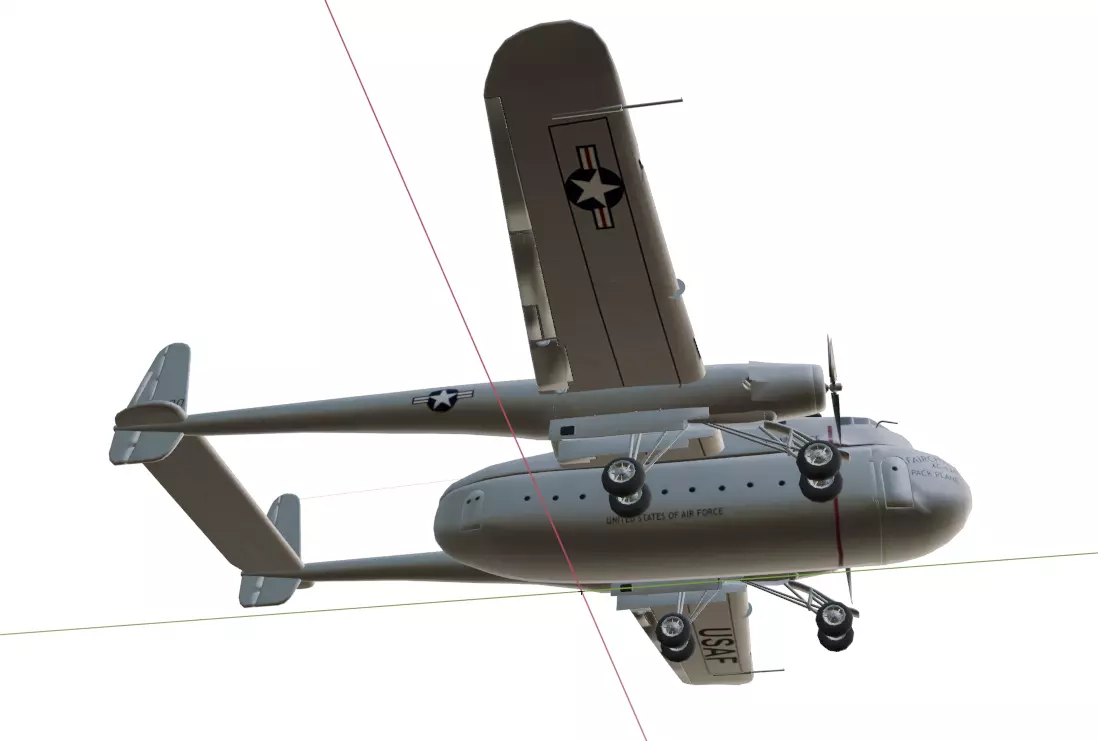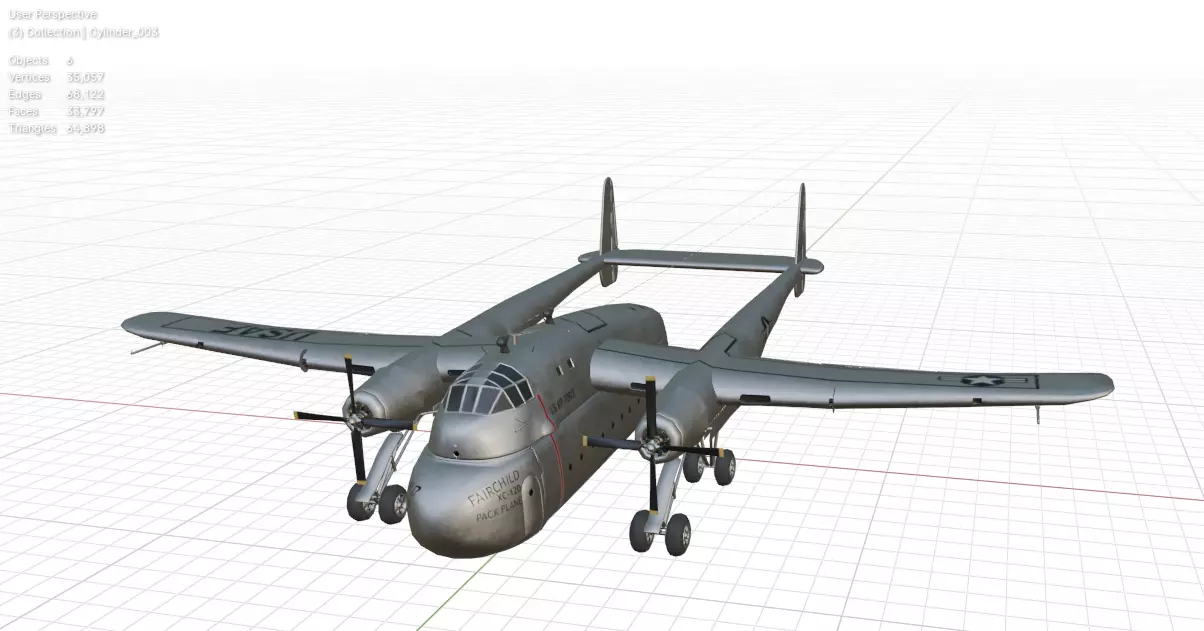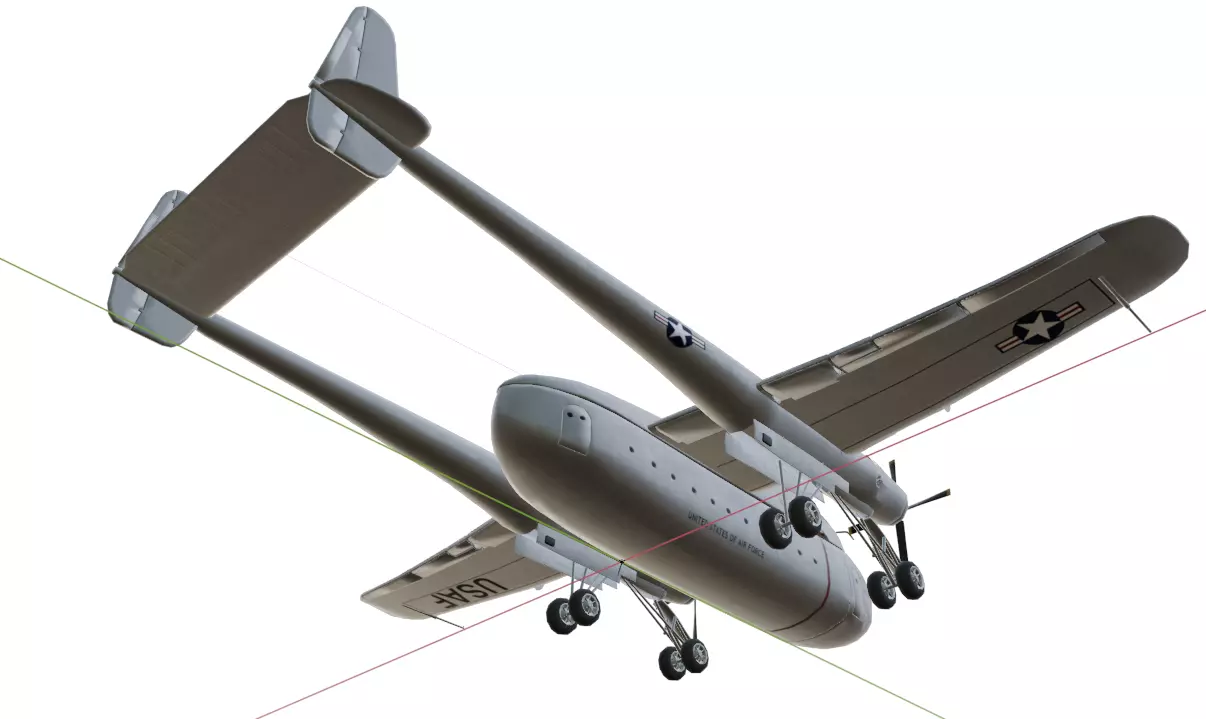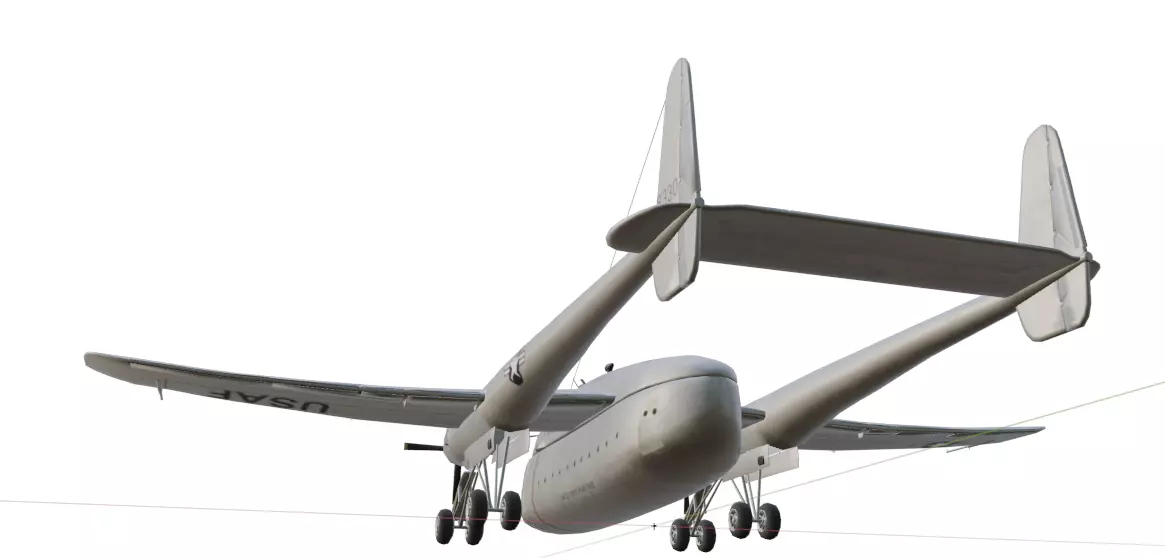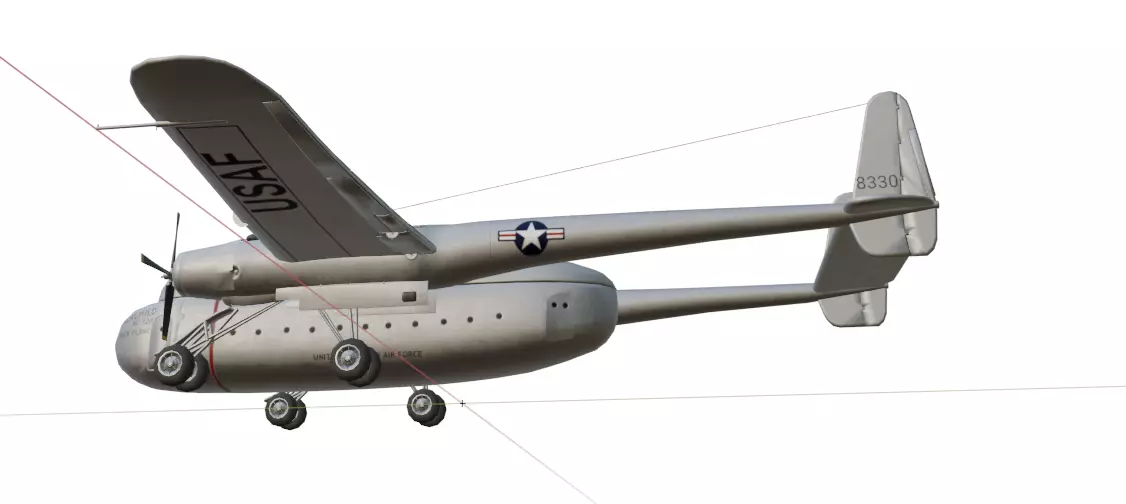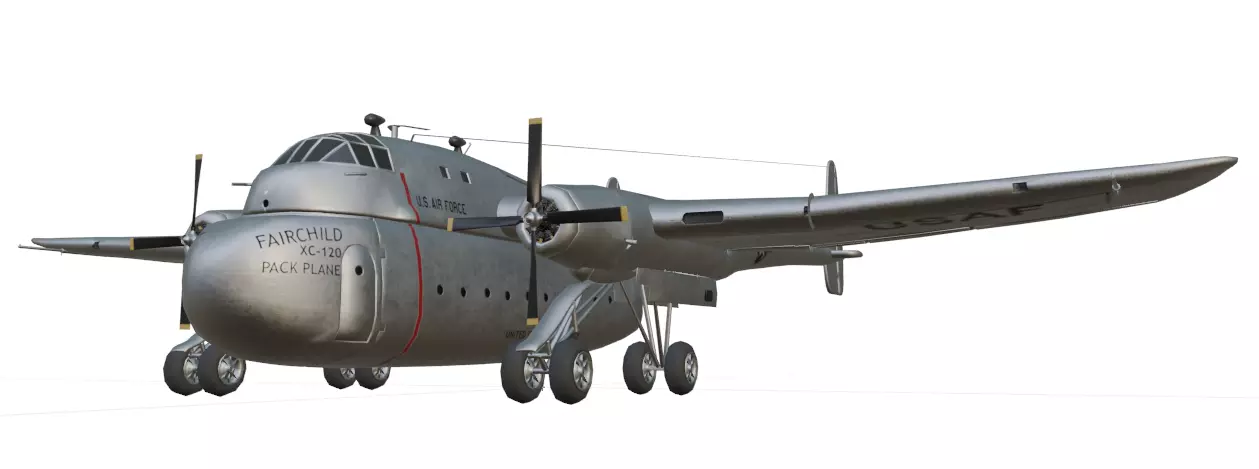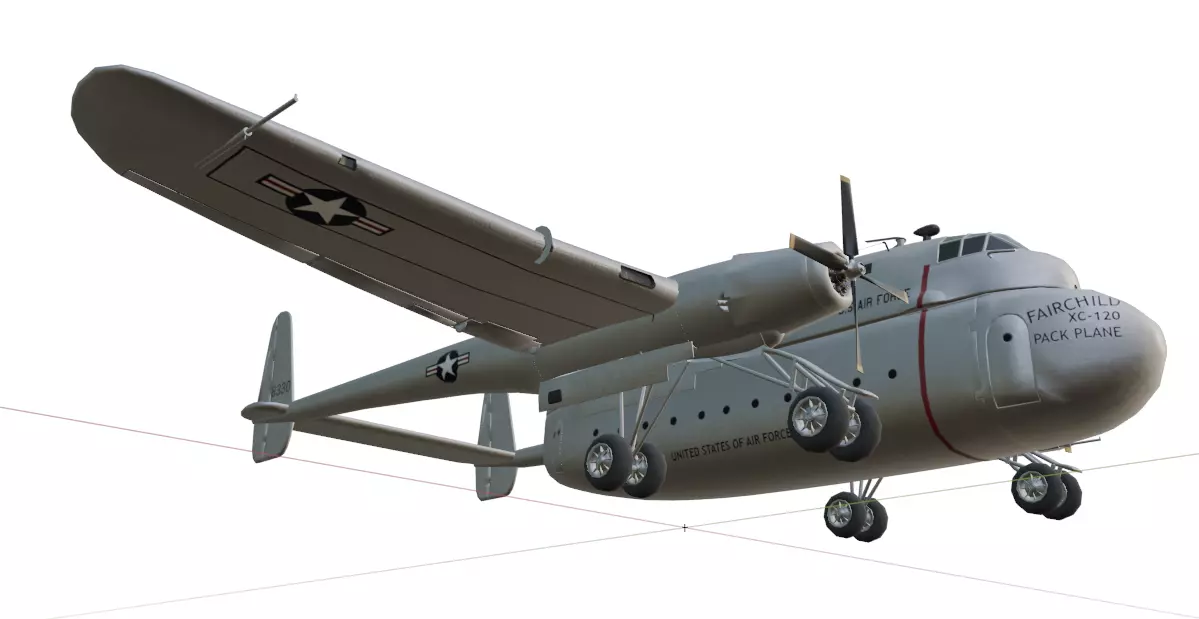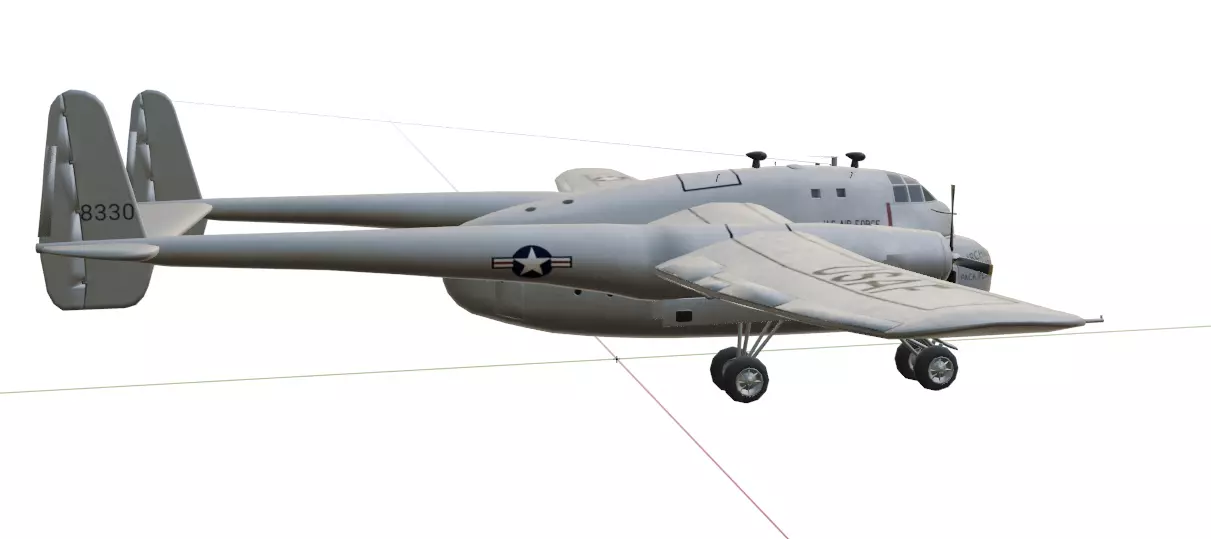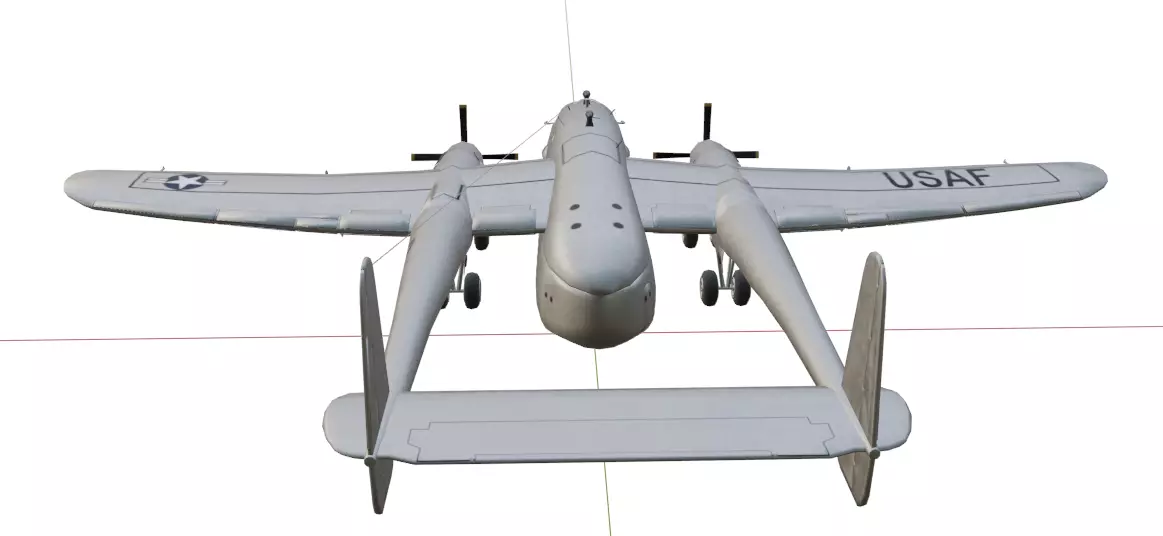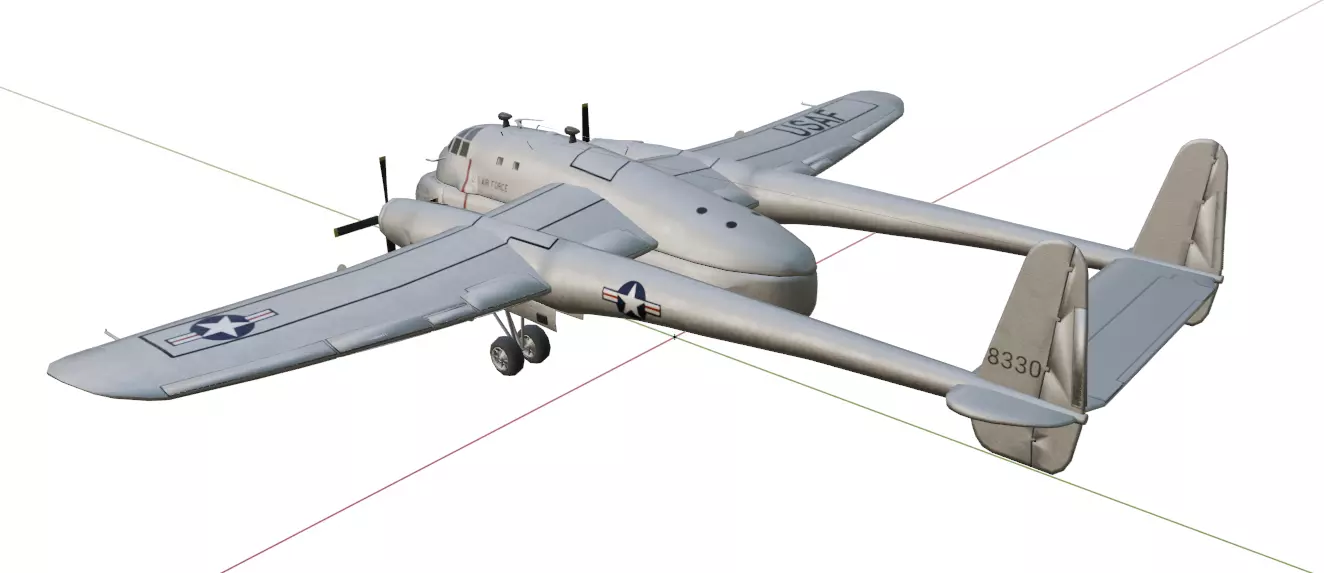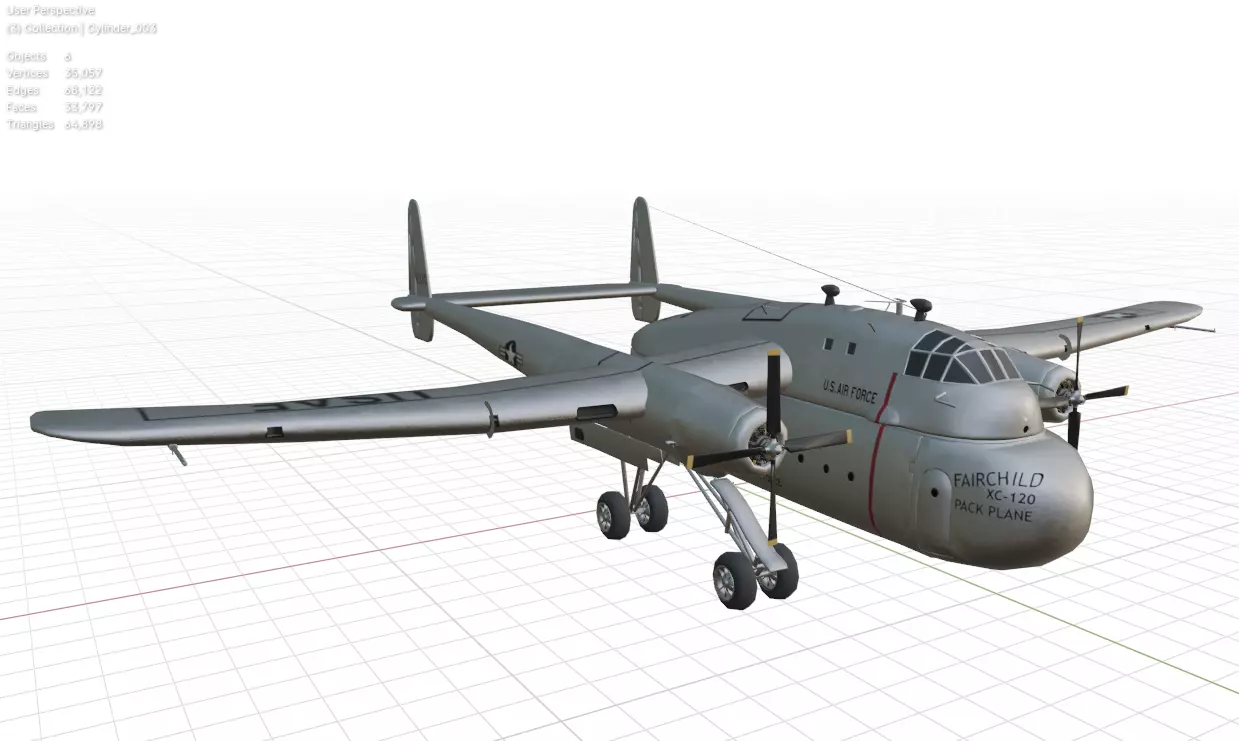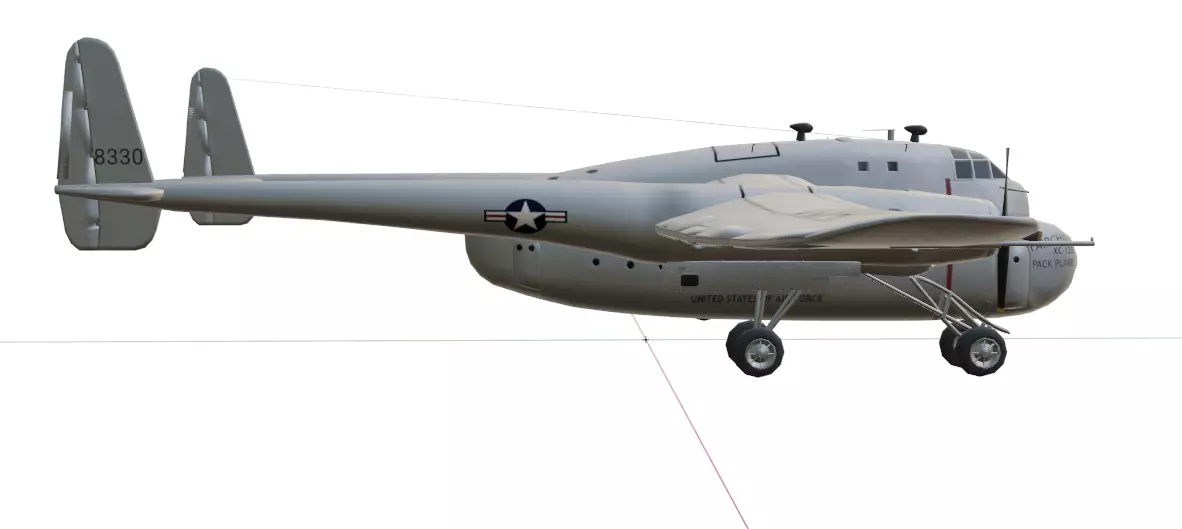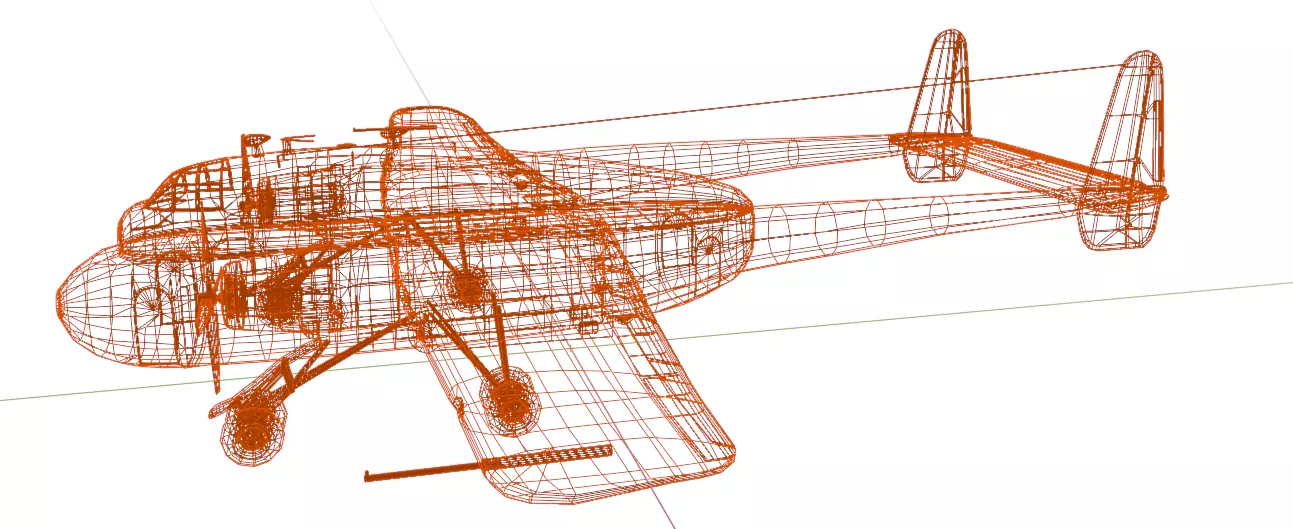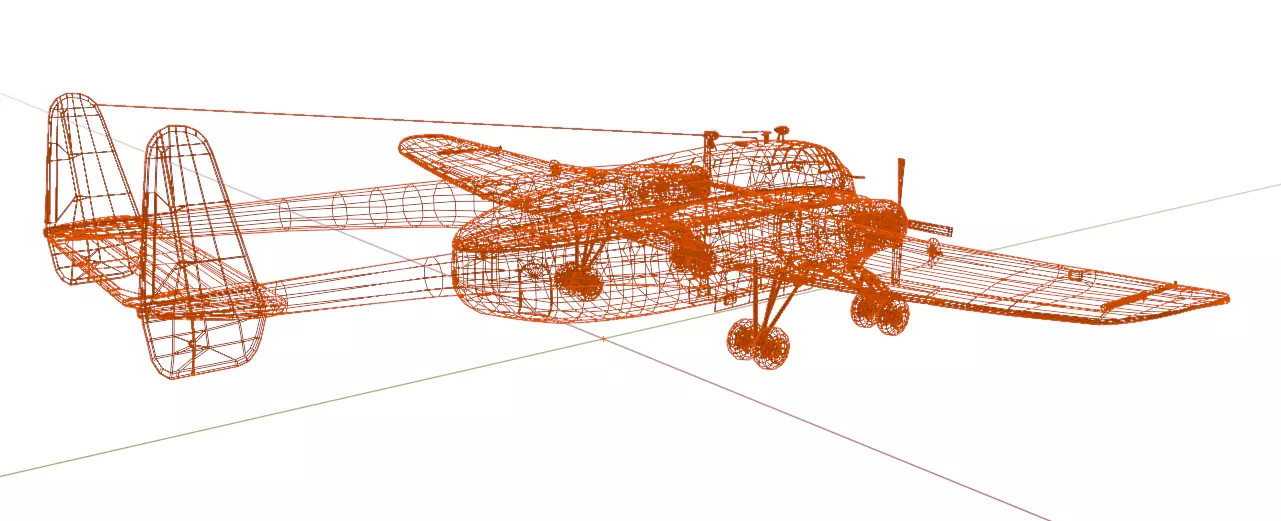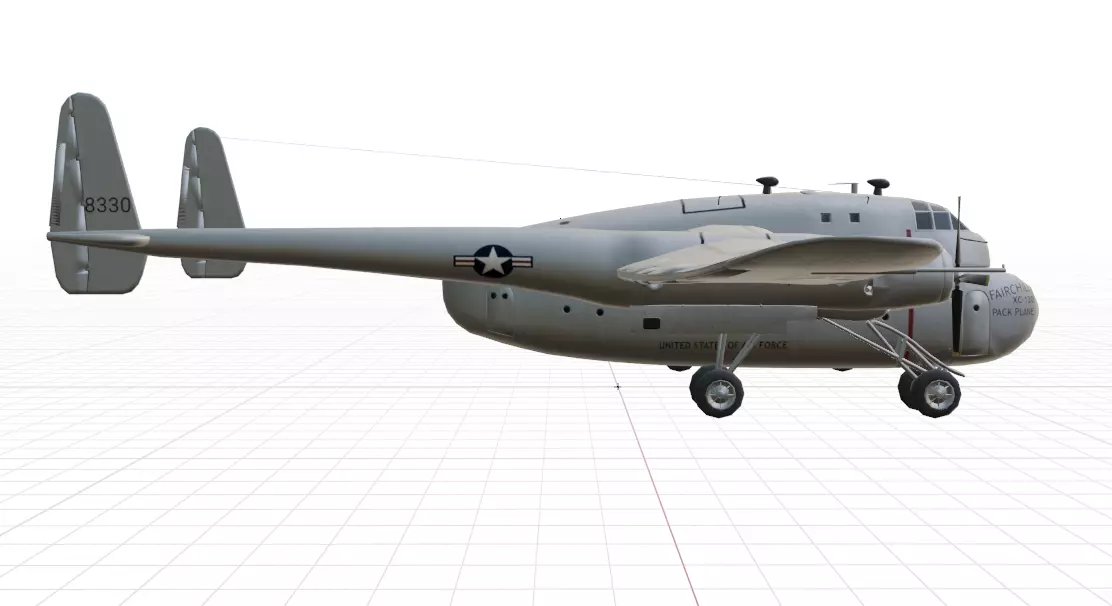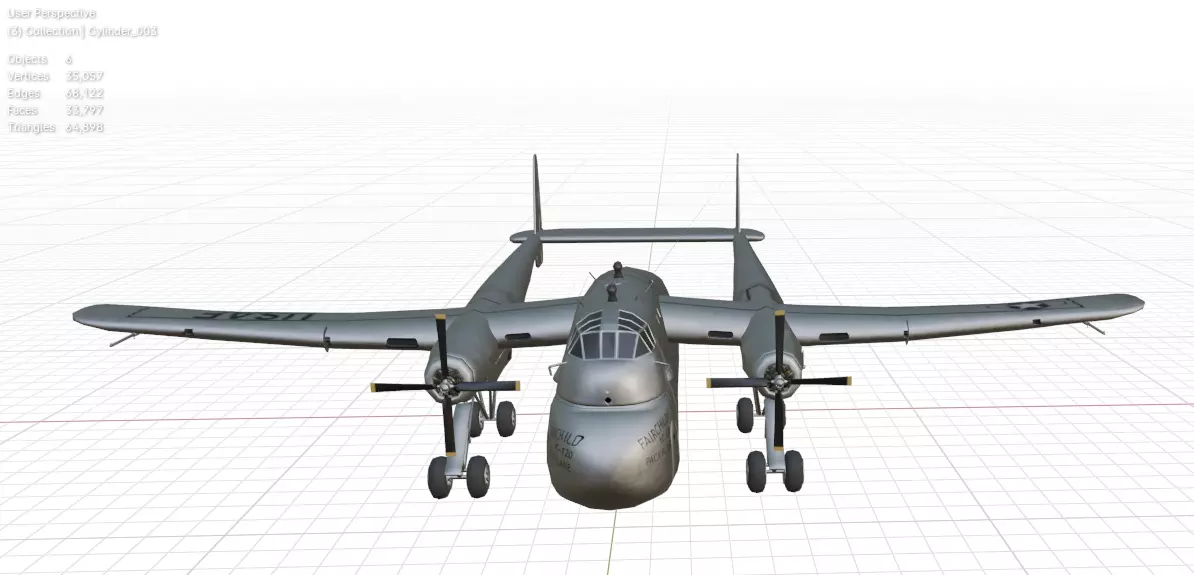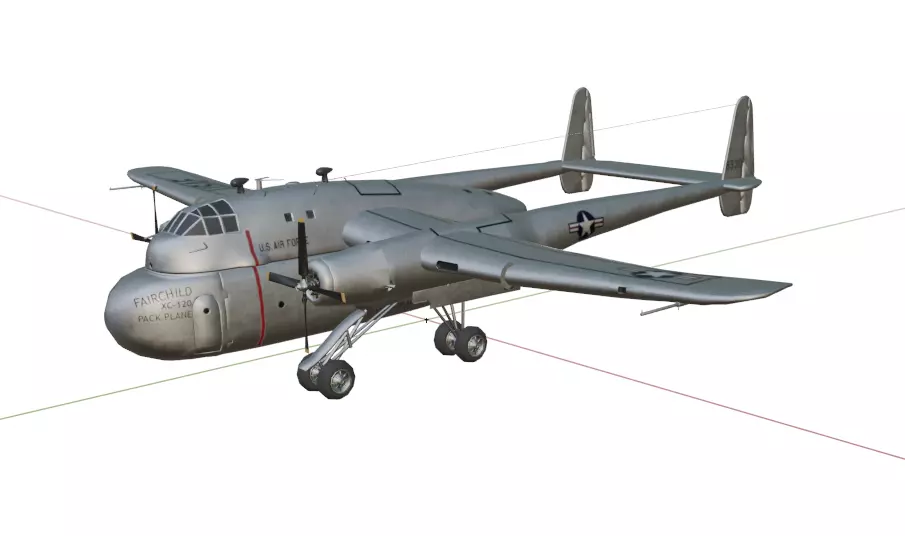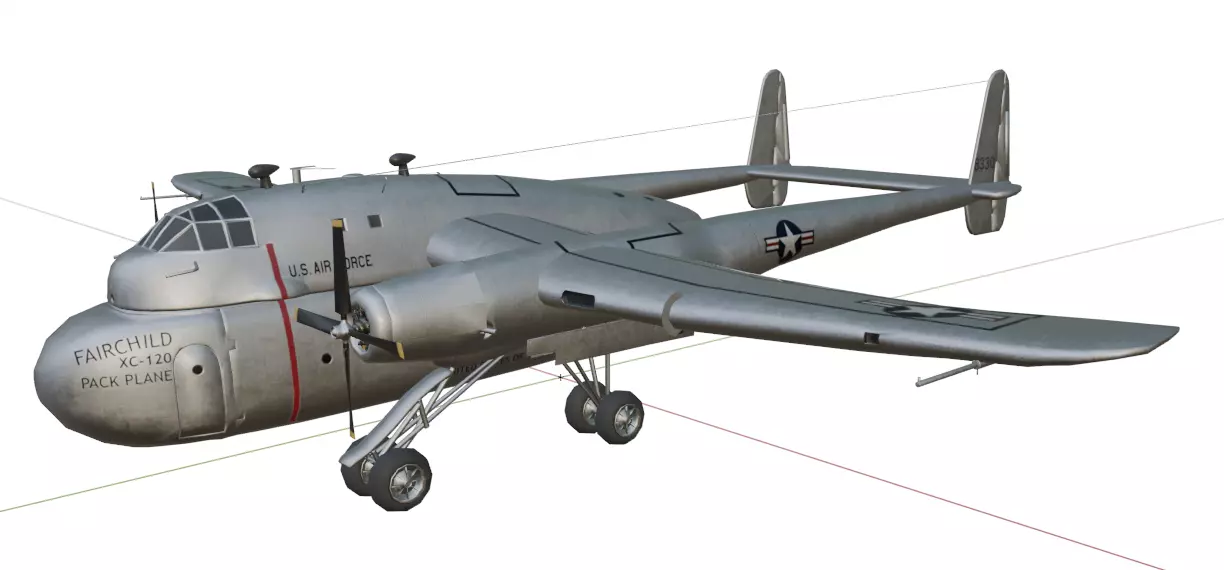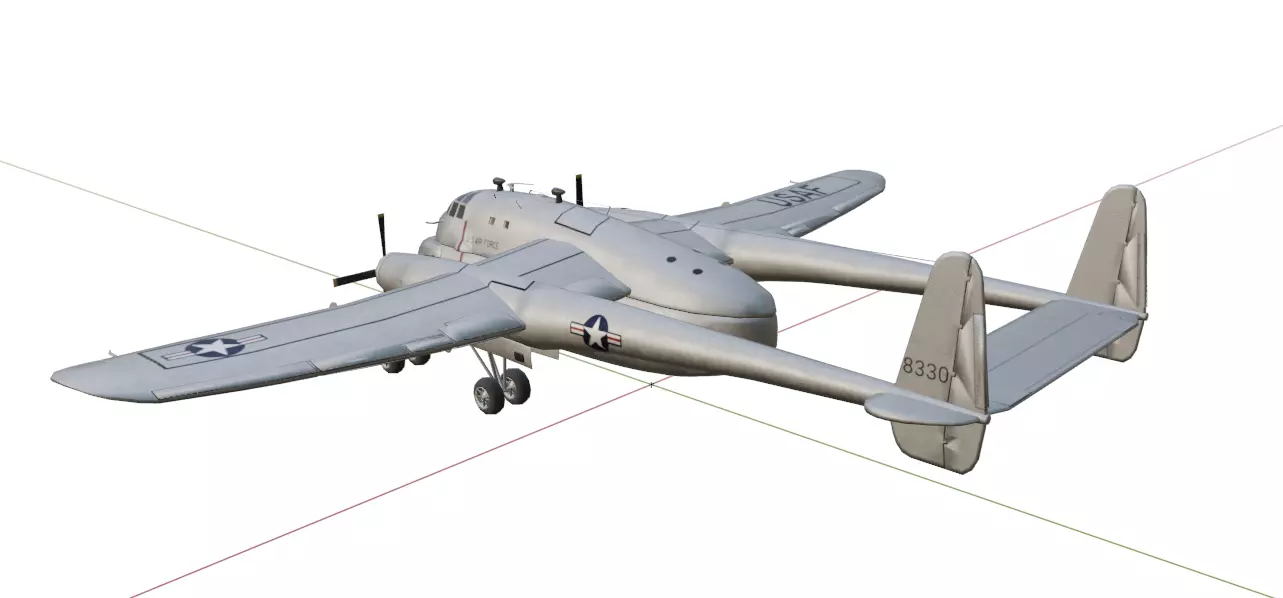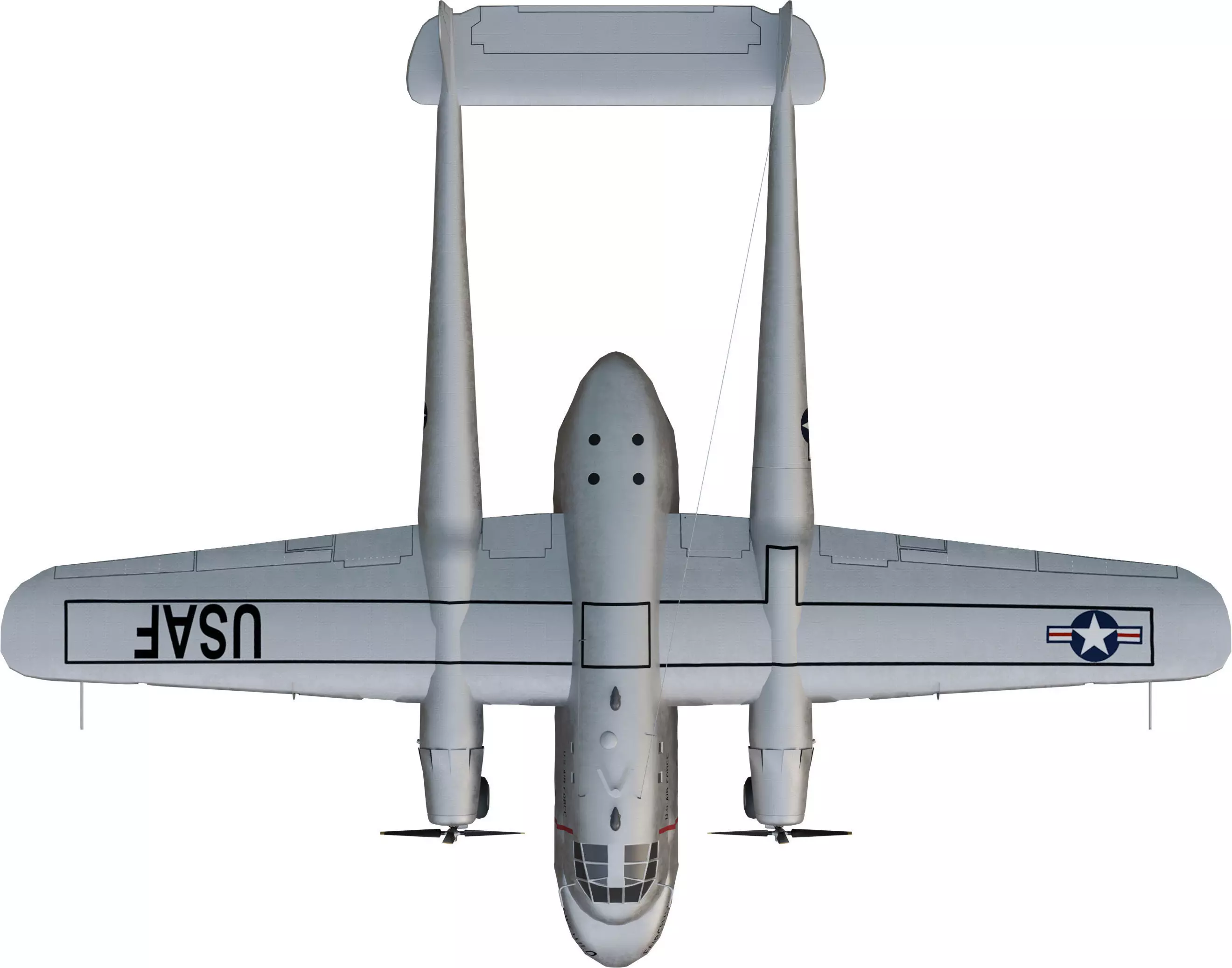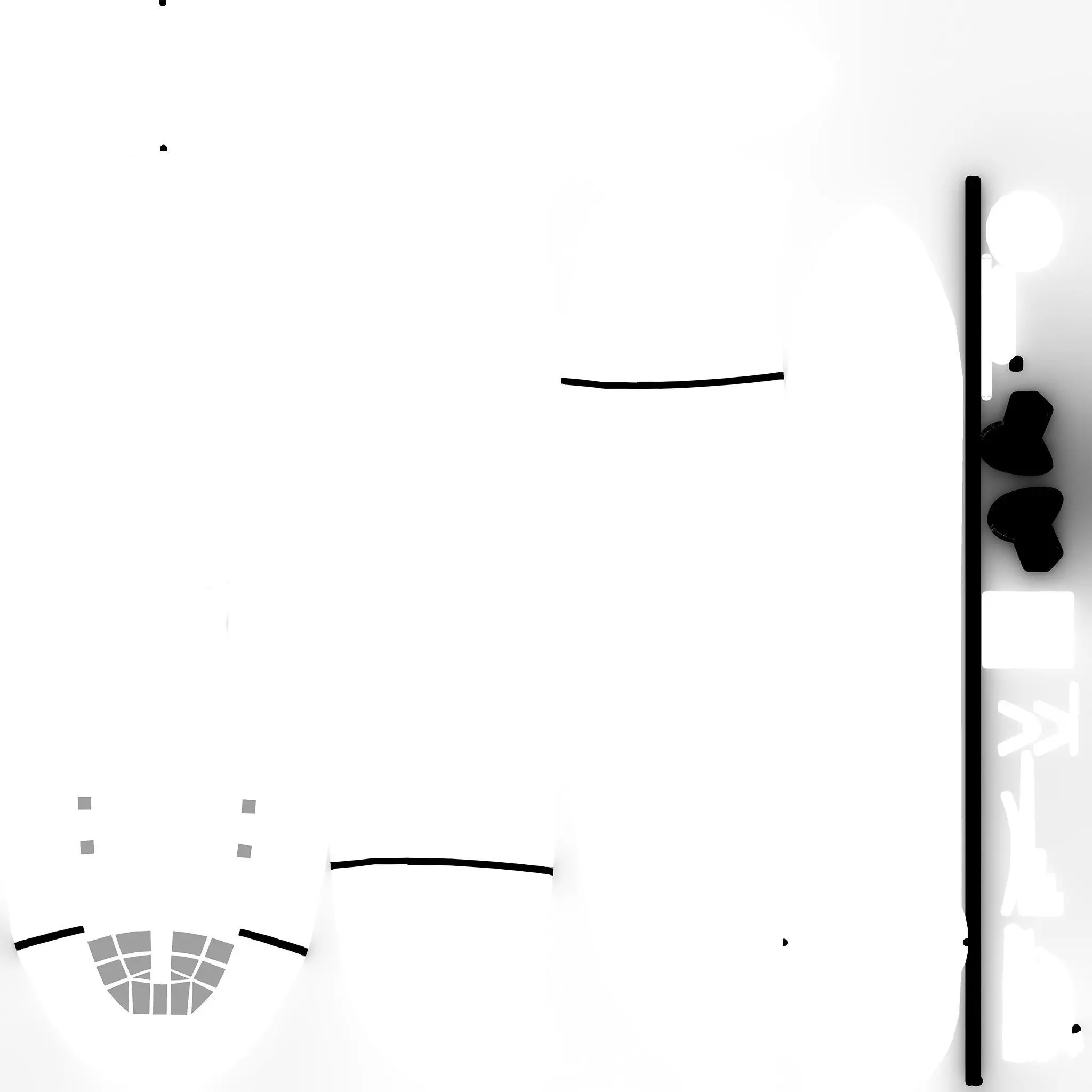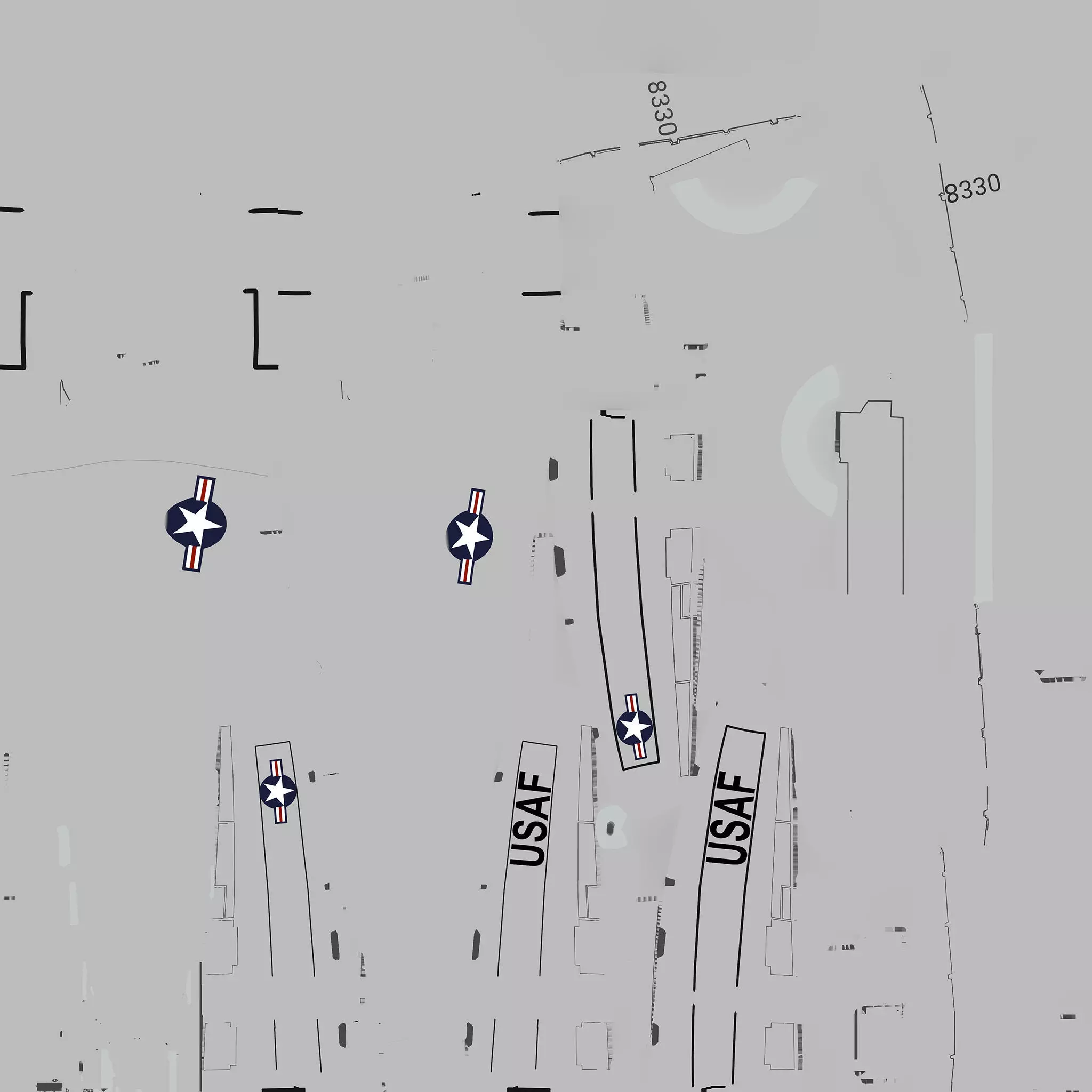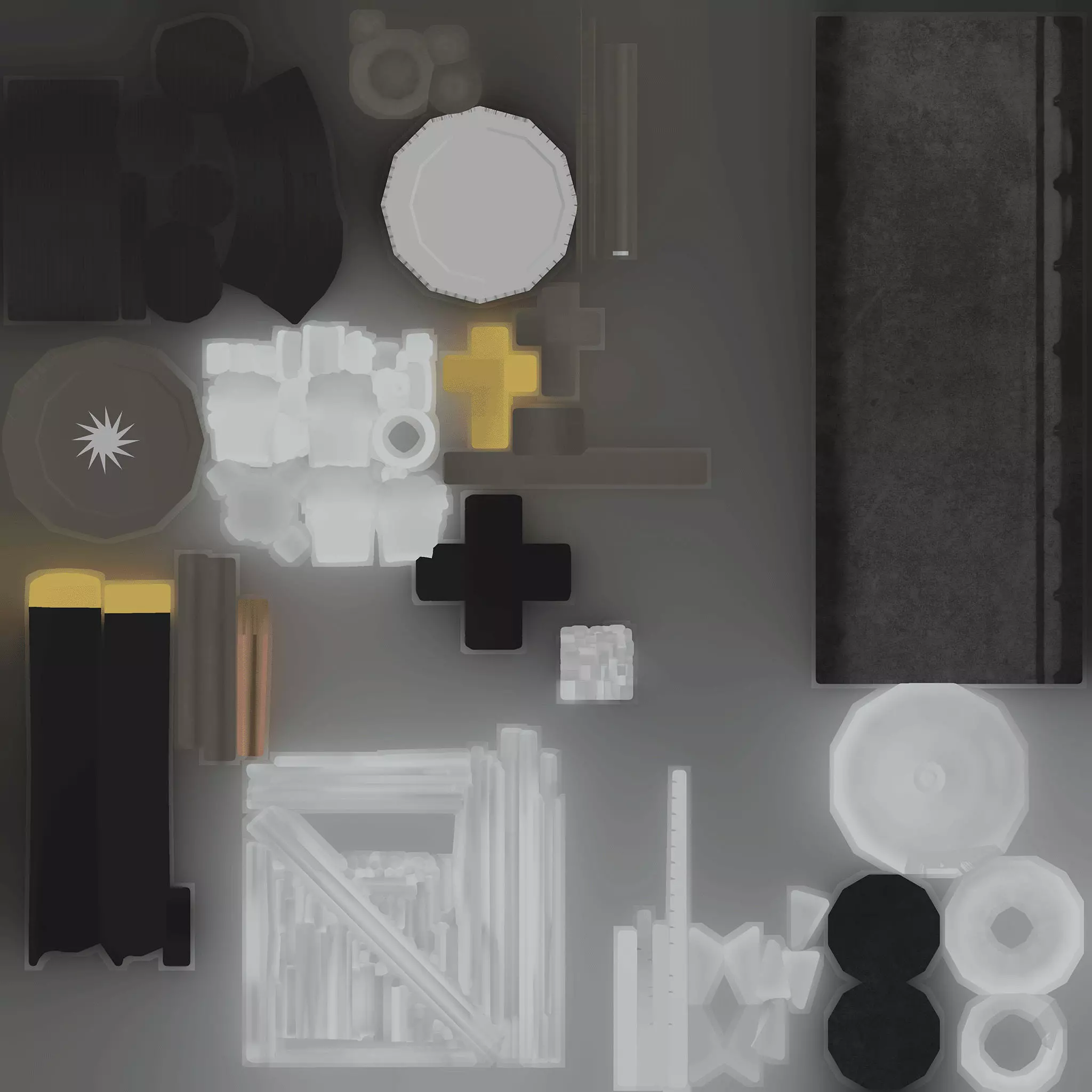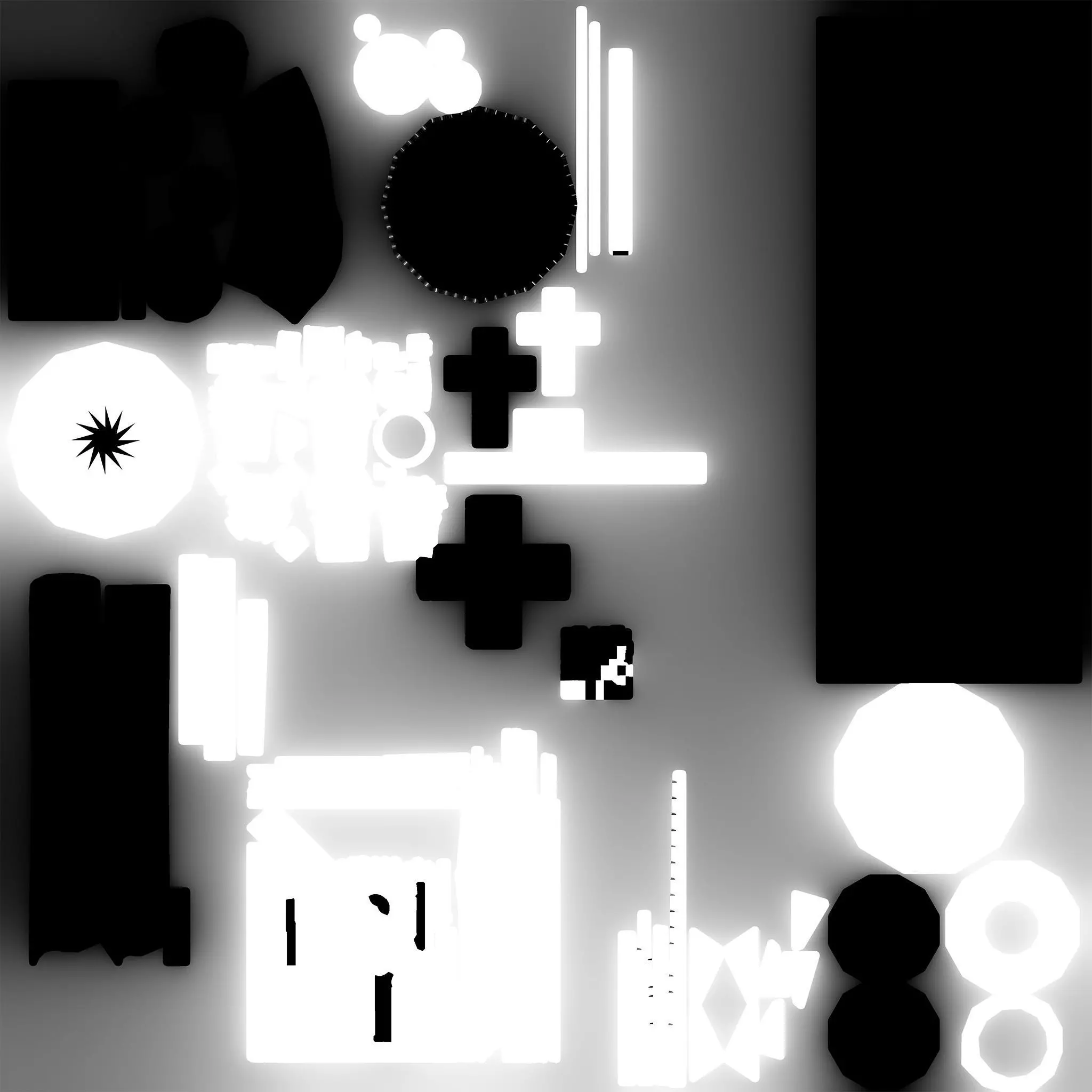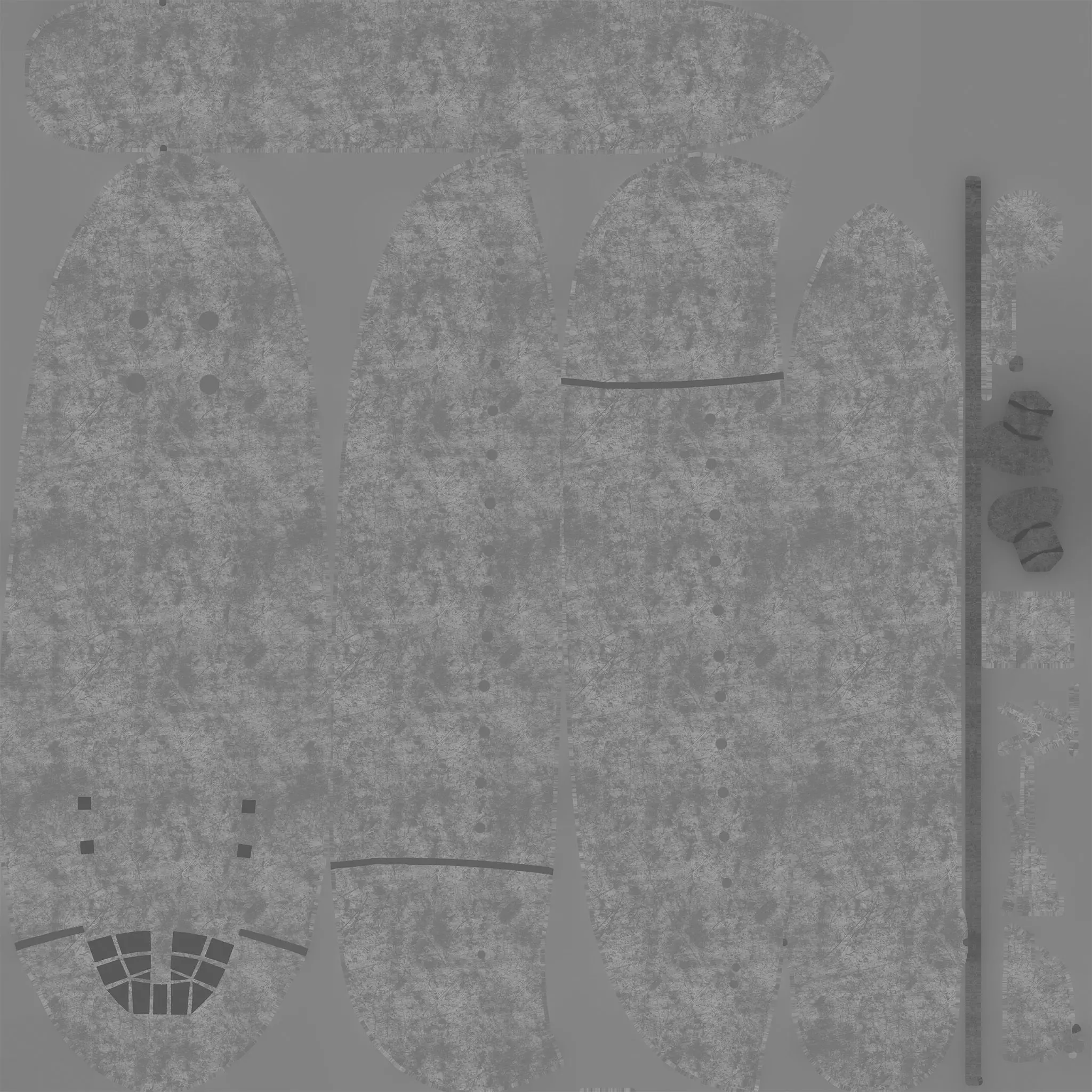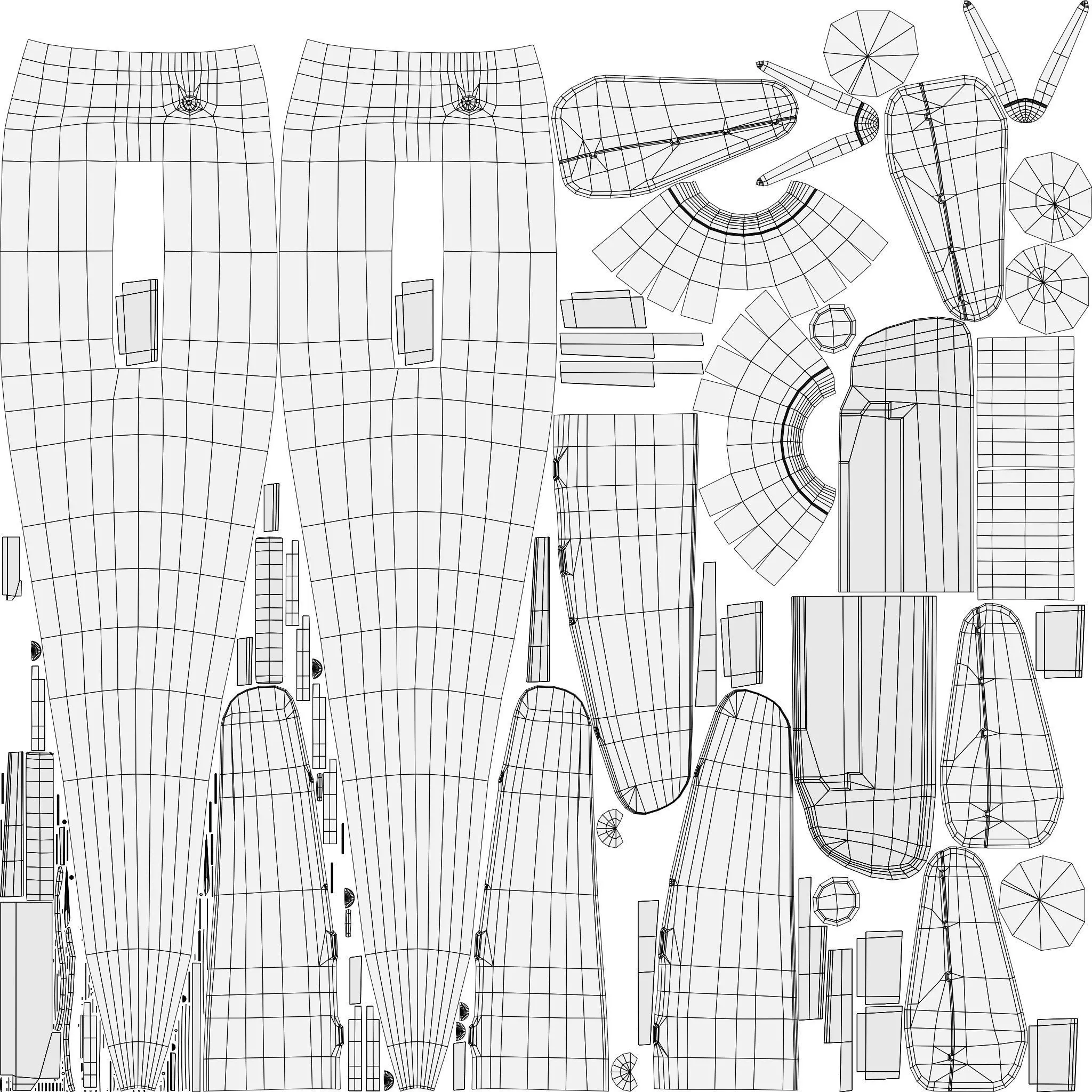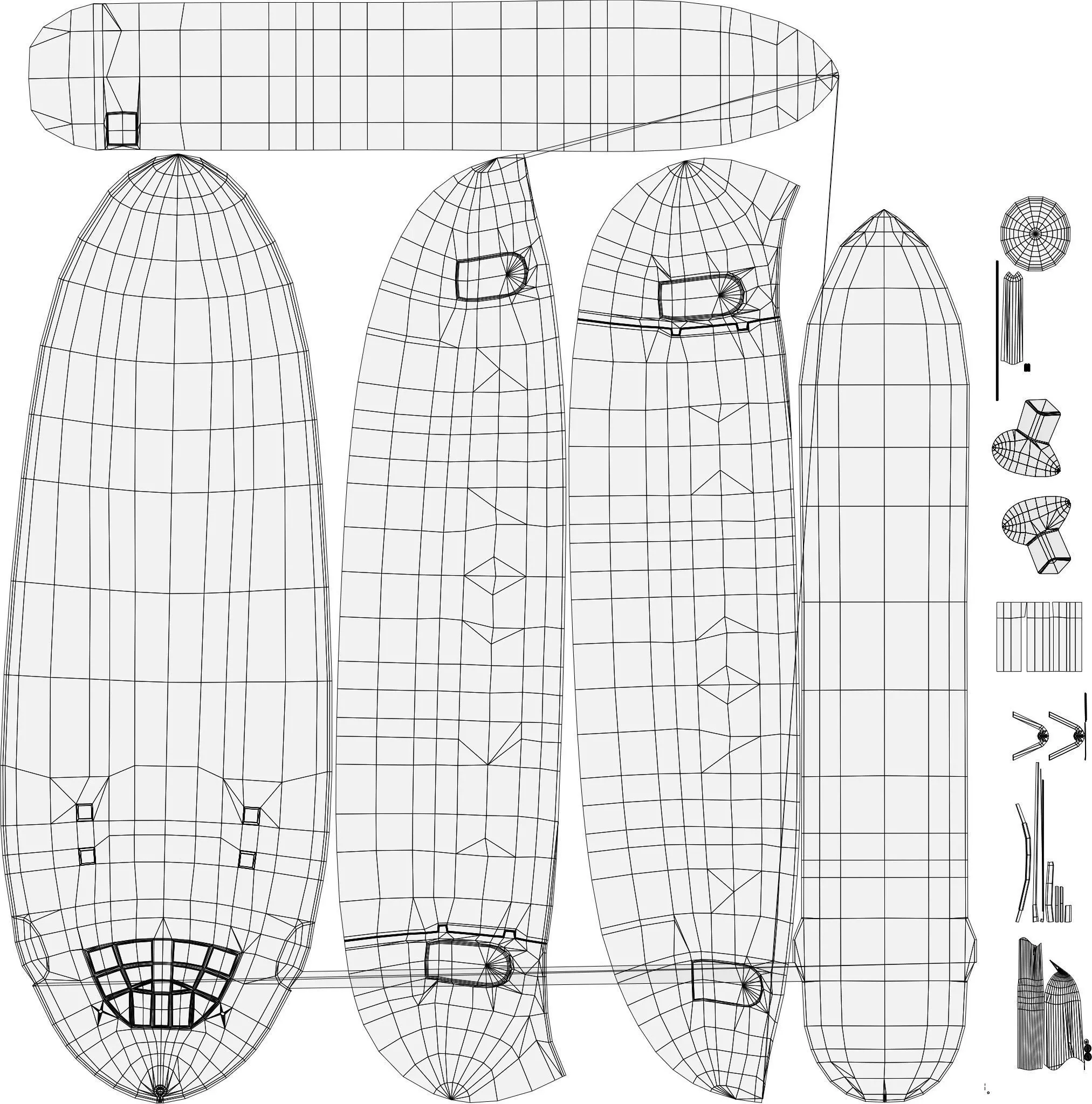
FAIRCHILD XC-120 PACKPLANE - The Unwanted BLOB Low-poly 3D model
Perfect for use in games and simulation projects.
The Fairchild XC-120 Packplane was one of the most unusual aircraft concepts to emerge from post–World War II military aviation, a strange and ambitious prototype that looked like it had been designed by committee during a fever dream. Conceived in the late 1940s and developed from the more conventional C-119 Flying Boxcar, the XC-120 was Fairchild’s attempt to solve one of the enduring logistical problems in air transport: speed and efficiency on the ground. The solution? A modular cargo system that would allow the aircraft to drop off one load and pick up another with minimal downtime—essentially, a flying tractor with detachable trailers.
To achieve this, engineers stripped the lower fuselage off a standard C-119 and raised the cockpit and wing assembly several feet above the ground by installing tall, stalky landing gear. This awkwardly high stance allowed large, detachable cargo pods to be loaded and secured beneath the aircraft’s belly, rather than inside it. These pods looked like oversized aluminum containers, pre-packed and ready to be swapped out, eliminating the time-consuming process of unloading and reloading cargo by hand. In theory, the design promised unprecedented efficiency in military logistics. In practice, it produced what some called a mechanical marvel—and others called a monstrosity.
From its first public appearance, the XC-120 drew attention not only for its unconventional concept but also for its profoundly odd appearance. Aviation journalists, ground crews, and even Air Force officials struggled to describe it without a note of bemusement. The aircraft’s silhouette was defined by a grotesquely swollen lower section that jutted out beneath its spindly undercarriage, resembling an airborne tick that had overindulged. Some described it as a flying insect with an oversized belly; others, less politely, dubbed it “The Unwanted BLOB”—a name that stuck and continues to follow the aircraft into the annals of aviation folklore.
Despite the skepticism, Fairchild pressed on with testing. The aircraft did fly, and it flew reasonably well. It could carry a modular cargo pod weighing thousands of pounds and, when needed, detach and swap it out with relative ease. However, the entire system introduced a host of complications that were never quite ironed out. The tall landing gear was fragile and cumbersome. Ground crews required specialized equipment and training. The pods themselves, while efficient in concept, were not standardized with any existing logistical infrastructure. In short, the system worked, but not well enough to justify the overhaul it would require across the Air Force’s support network.
Only one XC-120 was ever built. The Air Force, intrigued but ultimately unconvinced, declined to move forward with the design. By the early 1950s, the project was shelved, and the aircraft quietly disappeared from flight lines and procurement plans. It never entered production, never went to war, and never delivered so much as a single crucial supply under combat conditions.
Yet, in its failure, the XC-120 earned a curious sort of immortality. Today, it stands not as an example of success but as a monument to aviation’s willingness to explore strange and unorthodox ideas. It is a reminder that innovation is not always elegant, and progress is sometimes paved with peculiar detours. The XC-120 Packplane remains one of the oddest aircraft ever to take flight—an idea ahead of its time, encumbered by the limits of its era, and made unforgettable by the unfortunate bloblike form it could never shake.
In museums and aviation archives, the XC-120 is rarely celebrated, but among enthusiasts of experimental aircraft, it retains a cult status. Like a cinematic B-movie monster that never quite made it to the big screen, it lives on in photographs, blueprints, and the collective memory of those who admire the audacity of unconventional design. The Unwanted BLOB may have been too strange to survive, but it was never too strange to forget.
Formats include: OBJ, FBX. Feel free to check out the other models, just click on the user name to see the complete portfolio.
